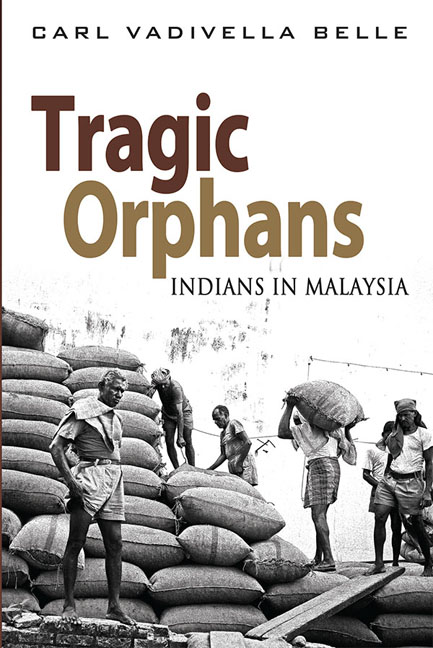Book contents
- Frontmatter
- Contents
- Acknowledgements
- List of Abbreviations
- Introduction
- 1 The Malay Peninsula: Early History, Melaka and the Colonial Setting
- 2 European Colonialism and the Malay Peninsula
- 3 India and the Development of British Ideologies of Empire
- 4 British Governance of Malaya
- 5 Slavery and Indentured Labour
- 6 Indian Indentured Labour in Malaya
- 7 Kangany Labour in Malaya
- 8 Other Indian Immigration
- 9 Indian Political Development to 1941
- 10 The Japanese Invasion, Subhas Chandra Bose and Indian Wartime Nationalism
- 11 The Post–war Period: Reform and Repression: 1945–48
- 12 From Federation to Merdeka
- 13 From Malaya to Malaysia: Singapore, 13 May and the New Economic Policy
- 14 The Mahathir Years: A Changing Malaysian Landscape
- 15 Abdullah Badawi, Islamization, and the Rise of Hindraf
- 16 Najib and 1Malaysia: A New Deal?
- Conclusions
- Bibliography
- Index
10 - The Japanese Invasion, Subhas Chandra Bose and Indian Wartime Nationalism
Published online by Cambridge University Press: 06 June 2017
- Frontmatter
- Contents
- Acknowledgements
- List of Abbreviations
- Introduction
- 1 The Malay Peninsula: Early History, Melaka and the Colonial Setting
- 2 European Colonialism and the Malay Peninsula
- 3 India and the Development of British Ideologies of Empire
- 4 British Governance of Malaya
- 5 Slavery and Indentured Labour
- 6 Indian Indentured Labour in Malaya
- 7 Kangany Labour in Malaya
- 8 Other Indian Immigration
- 9 Indian Political Development to 1941
- 10 The Japanese Invasion, Subhas Chandra Bose and Indian Wartime Nationalism
- 11 The Post–war Period: Reform and Repression: 1945–48
- 12 From Federation to Merdeka
- 13 From Malaya to Malaysia: Singapore, 13 May and the New Economic Policy
- 14 The Mahathir Years: A Changing Malaysian Landscape
- 15 Abdullah Badawi, Islamization, and the Rise of Hindraf
- 16 Najib and 1Malaysia: A New Deal?
- Conclusions
- Bibliography
- Index
Summary
THE BACKGROUND: JAPANESE WAR AIMS
Throughout the 1930s the idea of creating an economic zone, later to be termed a Greater East Asian Co-Prosperity Sphere, based on the pan-Asian ideal of universal brotherhood (hakko ichi'u — the eight corners of the world under one roof), gained wide currency in Japanese academic and political circles. Japan saw itself as the natural leader, indeed the dominant power, in any such regional grouping. This concept was more fully developed by the Japanese government and adopted as policy on 1 August 1940. The new order was to consist of a core economic unit centred on Japan, China and Manchukuo (Manchuria), and to include the mandated islands, French Indo-China, Thailand, Malaya, Borneo, and the Netherlands East Indies, and possibly Australia, New Zealand, and India. While the Japanese were prepared to grant nationhood to the Buddhist countries of the mainland, they intended to hold the “undeveloped” Islamic lands of the Malay Archipelago as permanent colonies. With regard to the Malay Peninsula, Singapore and the other Straits Settlements were to be placedc under direct rule, the four northern states (Kelantan, Perlis, Kedah, and Terengganu) were to be ceded to Thailand, while the remaining states were to be maintained under the existing structure but subject to the close guidance of Japanese advisors.
On 7 December 1941, Japanese forces attacked Pearl Harbor in Hawaii, U.S. military installations in the Philippines, Guam, Midway and Wake, and British airfields in Hong Kong. On 8 December the Japanese landed forces in Singora (in Southern Thailand) and Kota Bharu in Kelantan. The Japanese fleet, carrying 24,000 combat troops, effected a landing at Kelantan within two hours, despite heavy seas. The town was fully occupied by 9 December. Another Japanese force made a virtually unopposed landing at a number of strategic points in the Kra Isthmus.
BRITISH SOCIETY ON THE EVE OF THE INVASION
The Japanese invasion met a British administration and society both psychologically and militarily unprepared for war. Undoubtedly the major factor underlying the British sense of security was the massive Singapore naval base, the so-called arsenal of democracy. The base, a vast annexe covering twenty-one square miles, was widely viewed as impregnable, a bastion of the British Empire in the East, a guarantee of protection for both India and Australia, as well as the future site of the Royal Air Force headquarters in the East.
- Type
- Chapter
- Information
- Tragic OrphansIndians in Malaysia, pp. 176 - 224Publisher: ISEAS–Yusof Ishak InstitutePrint publication year: 2014

